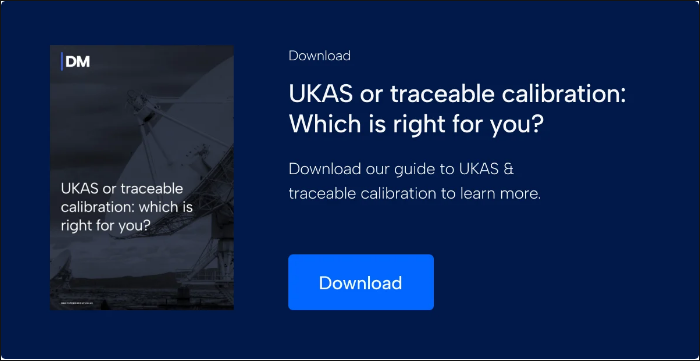Calibration solutions for cryogenic and high-heat applications
Extreme temperature environments introduce specific challenges for measurement reliability. Cryogenic and high-heat systems are common across aerospace, life sciences, chemical processing and energy sectors. Accurate calibration in these scenarios is essential to maintain product integrity and regulatory compliance.
Whether temperatures fall below –190 °C or exceed +1,000 °C, the instruments used to monitor and control these conditions must be calibrated using techniques that account for thermal stress and sensor degradation. Each method must also meet the documentation and traceability expectations of standards such as ISO 17025.
Calibration at cryogenic temperatures
Cryogenic calibration addresses temperature ranges typically from –80 °C down to –196 °C. These applications include liquid nitrogen storage, ultra-cold freezers, cryogenic gas handling and pharmaceutical cold-chain systems. Sensors operating in this range must maintain stability and responsiveness despite material contraction, condensation risks, and thermal lag.
Reference standards for cryogenic calibration include triple point cells and boiling-point media. Calibration requires controlled immersion techniques, insulation management and careful thermal equilibrium procedures. Documented uncertainty and traceability to recognised standards are essential, especially in quality-sensitive or regulated environments.
Calibration at high-temperature environments
High-heat calibration applies to sensors exposed to elevated temperatures in applications such as heat treatment, foundry operations, steam generation and materials testing. These environments typically involve temperatures above +500 °C and can extend well beyond that, depending on the process.
Thermocouples and infrared sensors used in these settings are prone to drift and instability due to oxidation, insulation fatigue or repeated thermal cycling. Reliable calibration in this range uses high-stability dry blocks, fixed-point furnaces or radiation sources, each operated under tightly defined control conditions. Calibration records must include reference sensor data, documented environmental conditions and clearly defined measurement uncertainty.
Critical requirements for calibration in extreme temperature environments
Calibration in extreme temperature environments introduces a combination of physical, procedural and compliance challenges. To meet operational and regulatory standards, each calibration must:
- Include traceable results to national or international standards (e.g. ITS-90, NIST, or UKAS)
- Account for environmental factors, such as humidity, pressure, and vibration, that may affect results
- Provide documented uncertainty appropriate to the specific temperature range and sensor type
- Use validated reference equipment, certified within defined tolerances and recalibrated at required intervals
- Follow controlled procedures, ensuring repeatability and defensibility of results under audit
These criteria are essential whether the calibration is conducted on-site or in a laboratory setting. They form the basis for reliable temperature measurement across cryogenic and high-heat applications, where accuracy failures can result in significant safety hazards, material losses, or regulatory breaches.
Why UKAS-accredited calibration is essential
Extreme conditions leave no room for estimation or assumption. Sensors must be verified using procedures that deliver complete traceability and precision. UKAS-accredited calibration confirms that each measurement result is generated under audited quality systems, using reference equipment and methods proven to meet international standards.
This approach supports:
- Traceable calibration results linked to national or international reference points
- Measurement uncertainty records that are specific to the sensor type and range
- Compliance with regulatory frameworks including ISO 17025, ISO 9001, and sector-specific protocols
- Operational confidence through consistency, repeatability, and standardised outcomes
This level of assurance is particularly critical where measurements support safety systems, product specifications, or temperature-sensitive materials. Accreditation ensures that every sensor has been verified not just for accuracy, but also for confidence in data integrity and legal defensibility.
Precision from cryogenics to extreme temperatures
Cryogenic and high-temperature environments demand specialist calibration solutions that account for the physical and procedural complexity of extreme measurements. Accuracy alone does not satisfy operational or compliance needs unless it is supported by documented traceability, controlled uncertainty and proven procedures.
DM provides UKAS-accredited calibration services designed to meet these exacting standards. Our mobile calibration technicians work on-site to deliver high-integrity results for both cryogenic and high-heat systems, with minimal disruption and maximum traceability.
To schedule a service or learn more about our temperature calibration capabilities, contact our team today or download our guide to find out more about UKAS-accredited calibration
Book your calibration now
Our experts are on-hand to handle all of your calibration needs.
